12 Amazing Curated Collage Animation Videos to Inspire Creativity in 2025

Collage animation is one of the most visually stunning and artistically engaging forms of animation today. With its ability to blend different media elements, textures, and motion, it provides a unique storytelling approach. The rise of Collage Animation Videos has transformed how artists experiment with visuals, merging photography, vintage illustrations, cut-out imagery, and digital graphics. If you’re looking for Creative Collage Animation Ideas or want to explore the Best Collage Animation 2025, this article presents a hand-picked selection of 12 Inspiring Collage Animation Designs to spark your creativity. We will also discuss Top Collage Animation Artists, the latest Mixed Media Animation Trends, and provide insights into How to Create Collage Animation using innovative Collage Animation Techniques. 1. “The Surreal World” – A Dreamlike Journey This video is a perfect example of surrealist storytelling. By incorporating cut-out images with fluid animation, the artist creates a hypnotic experience that feels like stepping into a dream. The combination of hand-drawn elements and digital layering makes it a top pick among Best Collage Animation 2025. ✔ Why It Stands Out: 2. “Vintage Echoes” – A Nostalgic Visual Symphony Collage Animation Videos often draw inspiration from the past, and “Vintage Echoes” is a tribute to mid-century aesthetics. Using old newspaper cuttings, retro advertisements, and analog textures, the animator breathes new life into archival materials. ✔ What Makes It Special: 3. “Fragments of Time” – A Mixed Media Masterpiece Blending photography, stop-motion, and digital layering, “Fragments of Time” demonstrates the best in Mixed Media Animation Trends. It tells an emotional story through fragmented visuals, engaging the viewer in a layered experience of nostalgia and innovation. ✔ Key Highlights: 4. “Parallel Universes” – An Experimental Animation Feat This project pushes the boundaries of Collage Animation Techniques by incorporating 3D scanning, digital rotoscoping, and hand-cut visuals. The results are dynamic and ever-changing, reflecting the latest Best Collage Animation 2025 trends. ✔ What’s Unique About It: 5. “City Metamorphosis” – An Urban Tale in Motion For urban art lovers, “City Metamorphosis” presents a vibrant and ever-evolving cityscape animated through classic Collage Animation Videos techniques. With a mix of scanned magazine clippings, digital textures, and motion graphics, this piece truly embodies Inspiring Collage Animation Designs. ✔ Standout Features: 6. “Faces of Humanity” – A Social Commentary Piece This collage animation video takes on a more serious tone, blending documentary photography with stylized animation. It tackles themes of identity, migration, and cultural heritage, making it one of the Top Collage Animation Artists’ most thought-provoking works. ✔ Why It’s a Must-See: 7. “Celestial Tales” – Cosmic Collage Art A dazzling journey through space, “Celestial Tales” combines vintage astronomy maps, paper cut-outs, and surreal compositions. The seamless flow of elements makes it a great representation of Best Collage Animation 2025. ✔ Notable Aspects: 8. “Mechanical Dreams” – A Futuristic Fusion This visually stunning project showcases a fusion of technology and art, bringing to life mechanical objects through intricate Collage Animation Techniques. The artist’s use of AI-generated elements alongside handmade textures demonstrates the next step in Mixed Media Animation Trends. ✔ What Sets It Apart: 9. “Ephemeral Beauty” – A Delicate Exploration One of the most poetic examples of Creative Collage Animation Ideas, this piece is a meditation on nature’s fragility. The artist uses botanical illustrations, watercolor textures, and stop-motion to create a soothing, immersive animation. ✔ What Makes It Inspiring: 10. “Echoes of Memory” – Time-Warped Visuals Blending glitch effects with traditional Collage Animation Videos, this work explores themes of lost memories and distorted time. Using VHS textures, old film reels, and fragmented newspaper clippings, it stands out among Inspiring Collage Animation Designs. ✔ Unique Features: 11. “Dystopian Reverie” – A Dark Sci-Fi Animation This animation dives into a dystopian future, using cyberpunk-inspired visuals with fragmented collage elements. With neon colors, digital interference effects, and grainy textures, it represents the cutting edge of Best Collage Animation 2025. ✔ Why It’s Exceptional: 12. “Wild Imagination” – A Playful, Childlike Animation This animation embodies pure creative freedom, with elements of hand-drawn doodles, cut-out photography, and animated clay models. It’s a great example of How to Create Collage Animation with a fun and experimental approach. ✔ Why It’s a Must-Watch: Final Thoughts: Exploring the Future of Collage Animation From surreal dreamscapes to experimental urban tales, Collage Animation Videos continue to evolve in exciting ways. The Best Collage Animation 2025 includes stunning advancements in digital layering, mixed media experimentation, and the integration of AI-assisted tools. For artists looking to break into this medium, exploring How to Create Collage Animation and studying Top Collage Animation Artists will provide inspiration and technical knowledge. Whether it’s through stop-motion cut-outs, digital layering, or a mix of both, collage animation offers endless creative possibilities. With these Inspiring Collage Animation Designs, you’re sure to find new ideas and approaches that will ignite your passion for this fascinating and ever-evolving art form.
Why High-Quality Animations Are Essential for Successful Medical Marketing Campaigns in 2025!
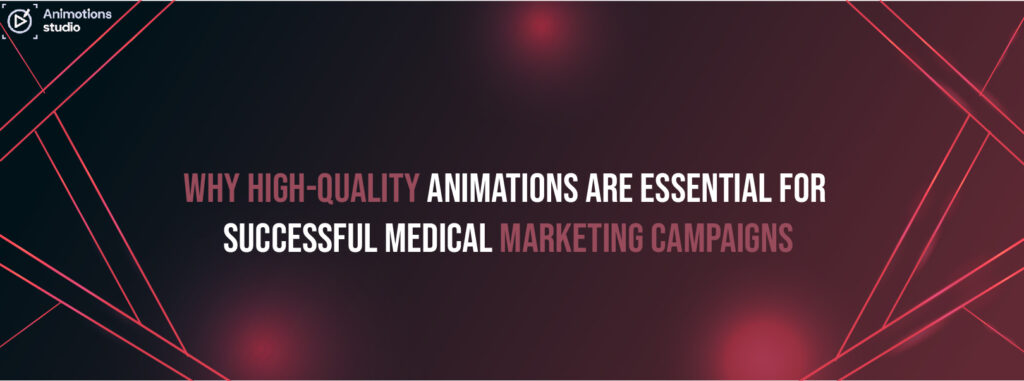
In the ever-evolving healthcare industry, Medical Animation Marketing has emerged as a game-changer for engaging patients, educating medical professionals, and promoting healthcare services effectively. With the rise of Medical Video Animation 2025, high-quality visuals are no longer just an option but a necessity for brands looking to make an impact in the medical sector. This article explores why High-Quality Medical Animations are vital for Healthcare Marketing with Animation and how they enhance communication, boost patient engagement, and align with Medical Marketing Trends 2025. Whether you are in pharmaceuticals, biotech, or telemedicine, leveraging 3D Animation for Medical Campaigns will be crucial for marketing success. 1. The Rise of Medical Animation Marketing Visual storytelling has always been a powerful tool in marketing, but in healthcare, it plays an even more crucial role. Medical Animation Marketing uses advanced 2D and 3D animations to illustrate complex medical concepts in an engaging and easy-to-understand way. ✔ Why It’s Important: Example: A pharmaceutical company using animation to explain how a new medication interacts with the body at a cellular level. 2. Why High-Quality Medical Animations Matter The quality of an animation can make or break a medical marketing campaign. High-Quality Medical Animations offer: ✅ Accuracy & Credibility – Precise visuals ensure scientific and medical accuracy. ✅ Enhanced Engagement – Well-designed animations retain audience attention. ✅ Improved Retention – Viewers remember animated content better than text-heavy explanations.✅ Brand Trust – Professional animations enhance the credibility of healthcare brands. A study found that Healthcare Marketing with Animation boosts patient comprehension by over 60%, leading to better treatment adherence. 3. The Role of Medical Video Animation in 2025 As digital consumption rises, Medical Video Animation 2025 is set to dominate healthcare marketing campaigns. ✔ Trends Driving Growth: Example: A biotech company using AR-powered animations to showcase the mechanism of a new vaccine in action. 4. Benefits of Animation in Healthcare The Benefits of Animation in Healthcare go beyond marketing; they enhance medical education, patient experience, and treatment adherence. Key Advantages: ✅ Simplifies Complex Medical Concepts Explaining procedures, mechanisms of action, or surgical techniques is easier with animations. Example: A 3D animation showing how a pacemaker regulates heart rhythm. ✅ Increases Patient Trust & Engagement Animations help demystify treatments, reducing patient anxiety and increasing trust. Example: Animated consent videos explaining pre-surgery risks and benefits. ✅ Improves Doctor-Patient Communication Physicians use animations to explain diseases and treatments more effectively. Example: A dermatologist using a short animated clip to explain eczema triggers. 5. 3D Animation for Medical Campaigns: The Future of Healthcare Marketing 3D Animation for Medical Campaigns is revolutionizing patient education and product visualization. ✔ Why 3D Animation is the Future: Example: A 3D animation of a knee replacement surgery for an orthopedic clinic’s website. 6. How Animation Improves Medical Ads Traditional medical advertisements can be dry and uninspiring. How Animation Improves Medical Ads lies in its ability to captivate and inform simultaneously. ✔ Animation’s Role in Medical Advertising: Example: A dental clinic using a 30-second animated ad to showcase the benefits of clear aligners vs. metal braces. 7. Medical Marketing Trends 2025: What’s Next? Understanding Medical Marketing Trends 2025 is essential for staying ahead in healthcare advertising. 🔹 AI-Driven Medical Animations ✔ AI-generated animations that personalize patient education. ✔ Example: An AI-powered chatbot using real-time animation to answer patient FAQs. 🔹 Augmented Reality (AR) & Virtual Reality (VR) in Healthcare Ads ✔ AR-enhanced animations that allow patients to explore treatment plans interactively. ✔ Example: A pharmaceutical brand using VR to explain a drug’s effects on brain function. 🔹 Animated Explainer Videos in Telemedicine ✔ Short, engaging medical explainer videos built into telehealth platforms. ✔ Example: A virtual doctor’s appointment app using animations to demonstrate home exercises for back pain. These trends highlight how Medical Video Animation 2025 will redefine healthcare engagement. 8. How to Implement High-Quality Medical Animations in Your Campaigns To leverage Medical Animation Marketing, brands must focus on quality, storytelling, and accessibility. Step 1: Define Your Goals 🎯 Identify whether your animation is for patient education, product marketing, or professional training. Step 2: Choose the Right Animation Style 🎨 Options include: Step 3: Work with Experienced Medical Animators 🎬 Hiring specialists ensures medical accuracy and high-quality production. Step 4: Optimize for Multiple Platforms 📲 Distribute animations across social media, websites, and patient portals. Step 5: Monitor Performance Metrics 📊 Track engagement, retention, and conversion rates to measure success. Example: A hospital creating a series of animated infographics on stroke prevention for social media. 9. Best Use Cases for Medical Animation Marketing Medical Animation Marketing is applicable in numerous healthcare fields: 🔹 Pharmaceutical Ads ✔ Explain drug mechanisms and treatment benefits. ✔ Example: An animated ad for a cholesterol-lowering medication. 🔹 Hospital & Clinic Marketing ✔ Showcasing healthcare services and patient success stories. ✔ Example: A maternity hospital using animations to guide expectant mothers. 🔹 Health Insurance & Wellness Programs ✔ Simplifying complex policies and benefits through visual storytelling. ✔ Example: A health insurance company using animation to explain claim processes. Conclusion: Why Medical Animation is a Must-Have for 2025 The healthcare industry is rapidly embracing digital transformation, and High-Quality Medical Animations are at the forefront of this evolution. Whether through 3D Animation for Medical Campaigns, AI-driven explainer videos, or interactive AR ads, the Benefits of Animation in Healthcare are undeniable. As Medical Marketing Trends 2025 shift toward greater personalization, accessibility, and engagement, investing in Healthcare Marketing with Animation will set brands apart from the competition. From patient education to pharmaceutical promotions, How Animation Improves Medical Ads is evident in its ability to simplify, engage, and convert audiences effectively. As we move forward, Medical Video Animation 2025 will remain an essential tool in healthcare marketing success.
The Most Inspiring Animated Logos of All Time: Iconic Designs in Motion to Inspire in 2025!
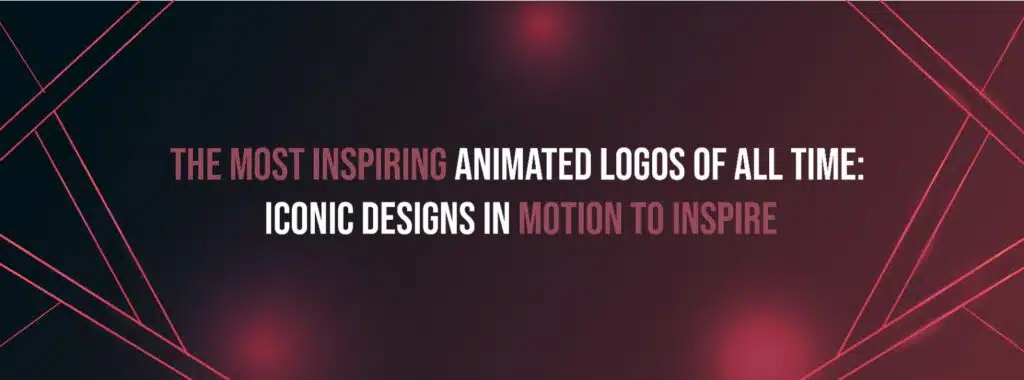
Logos are the visual identity of a brand, and animation brings them to life, making them even more engaging and memorable. Best Animated Logos showcase the power of movement in branding, making them stand out in digital landscapes, commercials, and social media platforms. In 2025, Iconic Logo Animations continue to evolve, influenced by AI, AR/VR integration, and new Logo Animation Trends. Brands are investing in Motion Graphics for Logos to create more immersive and interactive experiences. Whether you’re looking for Creative Logo Motion Design ideas or want to learn How to Animate a Logo, this article will provide a comprehensive look at Inspiring Animated Logo Designs and the best Famous Brand Logo Animations in 2025. 1. Why Animated Logos Matter in 2025 With digital branding evolving rapidly, static logos are no longer enough. Motion design helps businesses: ✔ Capture audience attention quickly. ✔ Enhance brand recognition with dynamic visuals. ✔ Elevate storytelling through animation. ✔ Integrate seamlessly with AR/VR platforms and AI-driven branding experiences. Example: A tech startup using AI-generated animations in its logo to interact with users in real-time. 2. The Evolution of Logo Animation 🔹 Early Static Logos (Pre-2000s) 🔹 Rise of Digital Branding (2000s-2020s) 🔹 AI-Driven Motion Graphics for Logos (2025 and Beyond) 3. Best Animated Logos That Set the Standard in 2025 1. Google ✔ AI-integrated animations that change based on user behavior. ✔ Dynamic motion effects optimized for web, mobile, and AR experiences. 2. Netflix ✔ The iconic “N” animation now includes subtle AI-generated recommendations based on viewing history. ✔ Personalized logo animations for different genres and user profiles. 3. Disney ✔ The castle intro now includes real-time animated overlays, adjusting lighting and fireworks based on region and season. ✔ Uses AI to enhance animation in Disney+ branding. 4. Nike ✔ The swoosh animation incorporates 3D holographic elements for AR branding. ✔ Minimalist yet dynamic branding across digital billboards and mobile experiences. 4. Iconic Logo Animations That Inspire in 2025 Iconic Logo Animations often set trends and establish branding benchmarks. Here are a few that have shaped motion logo design in 2025: ✔ Warner Bros: Updated rotating shield now features interactive animations for streaming services. ✔ Pixar: The hopping lamp animation now includes customizable elements based on user engagement. ✔ Intel: Dynamic, AI-powered animations that visualize real-time processing speed. ✔ Mercedes-Benz: 3D rotating logo emphasizing sustainability and innovation. 5. Creative Logo Motion Design Trends for 2025 Logo Animation Trends change with technology and design advancements. Here are key trends dominating 2025: ✔ AI-Powered Adaptive Logos – Logos that change color, shape, and animation based on user data. ✔ AR/VR-Enabled Logos – Interactive logos that create immersive experiences. ✔ Looping Minimalism – Simple, elegant animations optimized for social media. ✔ Neon & Holographic Effects – Futuristic logo animations that work well for tech brands. ✔ Liquid & Morphing Logos – Smooth, organic transitions between brand elements. 6. How to Animate a Logo for the Future Learning How to Animate a Logo in 2025 involves leveraging AI and interactive tools. Here’s a modern workflow: Step 1: Define Motion Style 📌 Choose between AI-driven, 3D, kinetic typography, or interactive motion effects. Step 2: Storyboard Your Animation 📌 Use AI-assisted tools to create intelligent motion sequences. Step 3: Choose Advanced Animation Software ✔ Adobe After Effects AI – Smart motion learning for logo animations. ✔ Blender AI – Best for 3D holographic logos. ✔ LottieFiles – Ideal for AI-enhanced SVG animations. ✔ Runway ML – AI-generated motion design. Step 4: Apply Motion Effects 📌 Use AI-assisted easing, morphing, and dynamic response effects. Step 5: Optimize for AR/VR & Web3 📌 Ensure animations are responsive and compatible with emerging tech. 7. Inspiring Animated Logo Designs in 2025 🔹 IBM ✔ Uses AI-driven logo transformations in its AI services. 🔹 Instagram ✔ Dynamic gradient animations that adjust to the user’s mood via AI. 🔹 Spotify ✔ Soundwave-adaptive motion graphics that sync with music. 🔹 FedEx ✔ AI-powered animations visualizing delivery routes in real-time. 8. Motion Graphics for Logos: 2025 Innovations ✔ AI-Personalized Logos: Adjust branding elements based on consumer behavior. ✔ VR/AR-Integrated Logos: Fully immersive branding experiences. ✔ Neural Motion Tracking: Logos that react to user gaze and gestures. ✔ Example: Apple’s AI-enhanced logo that adapts its glow based on real-time device activity. ✔ Example: Tesla’s animated logo visualizing energy flow in EVs. 9. Famous Brand Logo Animations & Their 2025 Evolution ✔ Coca-Cola: New holographic animations for AR marketing. ✔ Samsung: AI-generated transitions for personalized branding. ✔ Mastercard: Smart logo animations that adapt to purchase history. These Famous Brand Logo Animations demonstrate how motion enhances recognition and user interaction. 10. The Future of Animated Logos in 2025 As technology advances, logo animations will become: ✔ More Interactive: Logos responding to touch, AI prompts, and AR features. ✔ AI-Powered Personalization: Adapting logos to user behavior and demographics. ✔ Fully Immersive: Metaverse-ready logo animations with 3D holographic elements. Example: AI-generated logos that change based on the time of day or location. Final Thoughts: Why Animated Logos Define Branding in 2025 From Iconic Logo Animations to AI-Powered Branding, animated logos are no longer optional—they are the future of brand identity. Best Animated Logos create deeper engagement, boost brand recall, and enhance digital storytelling. For businesses, mastering Creative Logo Motion Design and staying updated on Logo Animation Trends ensures relevance in 2025’s competitive landscape. Whether you’re a designer or brand owner, integrating Motion Graphics for Logos will redefine digital branding experiences.
Top 12 Budget-Friendly Game Animation Tools for 2025: Perfect and Powerful Choices for Indie Developers and Small Studios
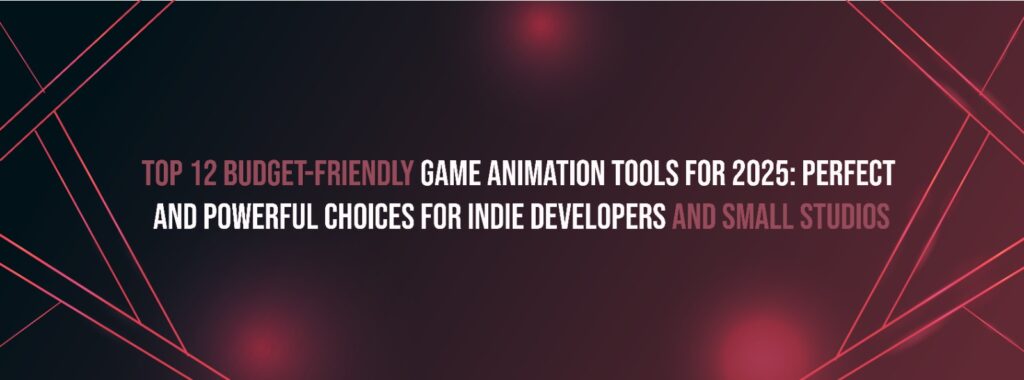
Gaming animation is an exciting and dynamic field where creativity meets technology to bring characters and worlds to life. However, finding the right animation tools, especially on a budget, can be a challenge for developers. If you’re a game developer seeking affordable animation tools to bring your creations to life, you’re in the right place! Whether you’re an indie developer, part of a small studio, or working with a tight budget, we’ve got you covered. In this guide, we’ll introduce you to the top 12 budget-friendly game animation tools of 2025 perfect for creating captivating character animations and delivering high-quality gaming animation services without breaking the bank. These tools are designed to help you create stunning game animations with ease, even if you’re working with limited resources. Whether you’re animating 2D or 3D characters, enhancing your game’s visuals, or streamlining your workflow, the right animation software can make a huge difference. With the right tools at your disposal, you can add fluidity, emotion, and impact to your game’s characters, creating the player experience. From simple motion graphics to intricate character designs, these tools offer a range of features suited to various needs and skill levels. Don’t let a tight budget hold back your creative vision. The following animation tools are user-friendly, cost-effective, and ideal for producing professional-grade animations. Whether you’re working on an indie game or a small-scale project, you’ll find a solution that fits your needs without sacrificing quality. Popular Animation Styles in Video Games Just as every game boasts unique narratives and experiences, game animations bring these stories to life with captivating visuals and distinct charm. From inspiring artistic expression to building emotional connections and boosting player engagement, the variety of animation styles enhances the gaming experience. While many games may adopt similar animation styles, this approach rarely suits every game. Each game stands out with its own aesthetic, atmosphere, and gameplay nuances, setting it apart from the rest. As the gaming world has diverse animation techniques, we’ve explored how innovative 3D animation styles empower game creators to push creative boundaries and engage players on a deeper level. This diversity not only drives innovation but also ensures that each game resonates with its audience uniquely. By blending artistic vision with technical expertise, animators create immersive worlds that players love to explore. varied animation styles open up endless possibilities, keeping the gaming experience fresh and engaging. Animation Style Description Notable Examples Realistic 3D Animation Focuses on mimicking real-life movements and features to add realism to the game. The Last of Us Part II, Red Dead Redemption 2 Cartoon Animation Characterized by vibrant colors, simplified character design, and expressive movements, commonly used in light-hearted and comedic games. Super Mario series, Rayman Legends Anime-inspired Animation Draws inspiration from Japanese anime, featuring dynamic movements and expressive characters, typically seen in fighting, action, and RPG games. Dragon Ball Fighter Z, Persona series, The Legend of Heroes Hand-drawn Animation Each frame is drawn by hand, ranging from minimalist to highly detailed artwork, ensuring smooth transitions in animation. Cuphead, Child of Light, Ori and the Blind Forest Motion Capture Realism Involves recording real-world movements and translating them into the digital realm, enhancing immersion and depth in the narrative. Death Stranding, The Last of Us II How 3D Animation Is Used In Video Games Understanding the Role of Animations in Video Games: Now that you’re familiar with the various styles of game animation, have you ever considered how these animations are seamlessly integrated into video games? Animations are the backbone of gaming, transforming static ideas into dynamic and engaging experiences. Character Animation: Have you noticed how game characters move, jump, run, attack, or interact with their surroundings? Their lifelike movements are no accident they’re the result of intricate animation techniques. This is all thanks to character animation, which breathes life into virtual characters through movement and action. Techniques like motion capture, keyframe animation, and facial animation create realistic, interactive game characters, making your gameplay experience immersive and engaging. These animations enhance emotional depth, ensuring players feel connected to the characters they control. Environment Animation It’s not just the characters that feel alive in video games the environments do, too! Every detail, from swaying trees to rippling water, is crafted to enhance immersion. Environment animation brings realism to virtual worlds, from landscapes and architecture to water, vegetation, props, weather effects, and dynamic lighting. These elements work together to create a living, breathing world that enhances the game’s look, feel, and overall functionality. By meticulously animating these aspects, developers build worlds players can lose themselves in for hours. Special Effects: What about those jaw-dropping explosions, magical spells, and dramatic lightning effects? They don’t just look cool they set the tone for unforgettable moments. Special effects rely on 3D animation to deliver stunning visuals like fire, destruction, smoke, and more. By leveraging advanced 3D animation techniques, these effects create the gaming experience, leaving players captivated by the awe-inspiring worlds they explore. These effects are more than visuals they’re tools that evoke excitement, tension, and wonder. Animations in video games don’t just tell a story they make you feel it. By integrating character movement, environmental details, and special effects, games create immersive worlds that push the boundaries of imagination. Top 12 Video Game Animation Software Explore the top 12 video game animation software designed to create dynamic character movements and immersive worlds. Perfect for indie developers and small studios, these tools offer professional features at budget-friendly prices. create your gaming projects with innovative and efficient solutions. 1. Unity: Unity is a versatile game development engine renowned for its robust animation capabilities. It supports both 2D and 3D animations, providing a wide range of tools for creating, editing, and managing animations. Unity’s animation system includes keyframe animation, blend trees, inverse kinematics, and timeline-based sequencing for precise control over movement. Additionally, it supports skeletal animation and ragdoll physics, enabling more realistic and dynamic character motions. Whether you’re animating characters or objects, Unity offers everything you need to bring your game to
How Animation Law Forced Representations Are Making Complex Legal Cases Easier to Understand – A Step-by-Step Guide in 2025!
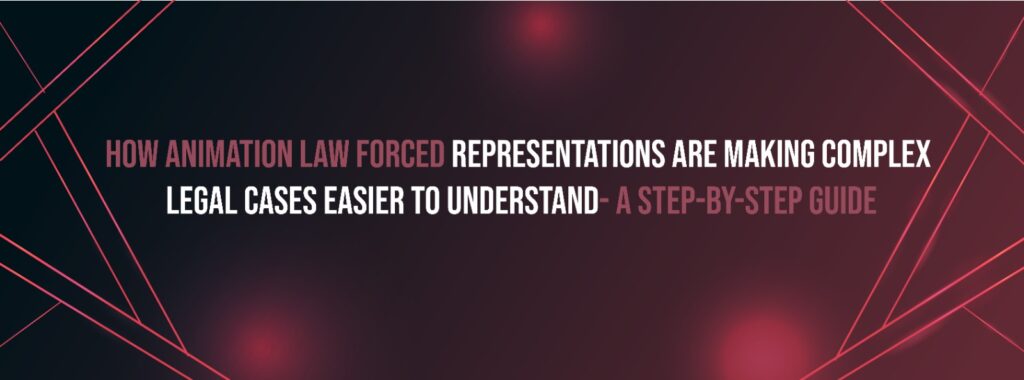
Legal proceedings are often complex, filled with technical jargon and intricate details that can be challenging for juries, judges, and even legal professionals to grasp. In 2025, the rise of Legal Animation Explained has transformed how courts present evidence, ensuring that information is both engaging and understandable. The application of Legal Graphics and Animation has become an essential tool in modern legal practice, helping bridge the gap between legal arguments and layperson comprehension. In this article, we’ll explore How Animation Helps Legal Cases, discuss Courtroom Animation in Law, and break down the Legal Visualization Techniques used to simplify litigation. We’ll also highlight Animated Legal Case Studies and examine how Using Animation in Courtrooms enhances communication in modern legal battles. 1. What is Legal Animation? At its core, Law Case Animation refers to the use of digital motion graphics, 3D animations, and other visual tools to represent evidence, reconstruct events, and clarify key aspects of a legal case. This can include: ✔ Crime scene reconstructions. ✔ Medical and forensic animations. ✔ Patent and intellectual property disputes. ✔ Accident recreations for personal injury cases. ✔ Visual storytelling in legal arguments. Example: A Legal Graphics and Animation expert creating a 3D-rendered sequence that shows the impact of a faulty medical device in a malpractice lawsuit. 2. How Animation Helps Legal Cases The power of How Animation Helps Legal Cases lies in its ability to simplify complex information. Legal animations: ✔ Improve Clarity – Breaking down convoluted data into digestible visuals. ✔ Enhance Jury Engagement – Capturing attention and increasing comprehension. ✔ Bridge Language Gaps – Visuals transcend language barriers, making them accessible to diverse audiences. ✔ Strengthen Arguments – Supporting legal claims with compelling evidence. Example: A criminal defense team using Legal Visualization Techniques to recreate a car accident from multiple angles, proving their client was not at fault. 3. Legal Visualization Techniques: Making Cases Easier to Understand Legal Visualization Techniques encompass several methods of representing information visually, including: 🔹 3D Crime Scene Reconstruction 🔹 Medical and Injury Animation 🔹 Patent & Intellectual Property Litigation 🔹 Financial and Data Animation 4. The Role of Courtroom Animation in Law Courtroom Animation in Law has grown from a niche practice into a vital tool for litigation success. In 2025, more courts accept animation as admissible evidence, provided it meets legal criteria: ✔ Accuracy: Must be based on verifiable facts. ✔ Relevance: Directly supports the case argument. ✔ Non-prejudicial: Must not unfairly bias the jury. 🔹 How Courtroom Animation Strengthens Cases ✔ Personal Injury Lawsuits – Animated reconstructions showing how an injury occurred. ✔ Traffic Accidents – Simulation of collisions based on real physics. ✔ Product Liability – Demonstrating how defects caused harm. ✔ Criminal Defense – Proving self-defense claims through visual representation. Example: A law firm using Law Case Animation to reconstruct a hit-and-run incident, helping the jury visualize the driver’s perspective. 5. Legal Graphics and Animation: The Tools Behind the Process Creating Legal Graphics and Animation involves a combination of: ✔ 3D Modeling – Designing lifelike environments and characters. ✔ Motion Capture – Recording real human movements for realistic animations. ✔ AI-Powered Analysis – Using artificial intelligence to enhance accuracy. ✔ Forensic Data Integration – Merging real forensic evidence with animation. ✔ Virtual Reality (VR) Simulations – Allowing jurors to experience crime scenes firsthand. Example: A VR recreation of a disputed property line used in a land dispute case. 6. Animated Legal Case Studies: Success Stories To illustrate the effectiveness of Animated Legal Case Studies, here are real-world applications where animation played a decisive role: ✔ Medical Malpractice Case – A 3D animation of a botched knee replacement surgery helped secure a $5 million settlement. ✔ Wrongful Death Litigation – A forensic animation proving negligence in a workplace accident led to a landmark ruling. ✔ Patent Infringement Dispute – A tech company used animation to demonstrate how a competitor copied their software algorithm. ✔ Police Brutality Case – Animation recreated body cam footage angles to expose inconsistencies in official reports. These cases demonstrate How Animation Helps Legal Cases by providing clear, visual explanations of critical evidence. 7. Using Animation in Courtrooms: Legal Acceptance and Best Practices As Using Animation in Courtrooms becomes more widespread, legal professionals must ensure that animations: ✔ Follow Federal Rules of Evidence – Must be relevant and non-misleading. ✔ Are Authenticated by Experts – Verified by forensic or scientific professionals. ✔ Can Withstand Cross-Examination – Opposing counsel must be able to scrutinize animations. ✔ Are Presented with Context – Used alongside expert testimony and documentation. Example: A court admitting Courtroom Animation in Law to visualize mechanical failure in a defective product case. 8. Future Trends in Legal Animation (2025 & Beyond) As technology evolves, Legal Graphics and Animation will incorporate: ✔ AI-Powered Legal Animations – Instant case reconstructions based on AI analysis. ✔ Augmented Reality in Courtrooms – Interactive 3D crime scene presentations. ✔ Blockchain-Verified Animations – Ensuring evidence integrity with digital timestamps. ✔ Jury VR Experiences – Allowing jurors to virtually step into reconstructed events. Example: A personal injury case where jurors experience an accident scene in VR, enhancing empathy and understanding. Final Thoughts: The Power of Legal Animation in 2025 With the growing influence of Legal Animation Explained, law firms, forensic experts, and legal teams must integrate How Animation Helps Legal Cases into their practice. Whether reconstructing crime scenes, simplifying patent disputes, or clarifying medical cases, Law Case Animation is an invaluable tool for modern legal professionals. As courts increasingly recognize Courtroom Animation in Law, legal teams that invest in Legal Visualization Techniques and Legal Graphics and Animation will gain a competitive edge. By embracing Animated Legal Case Studies, attorneys can communicate more effectively, ensuring jurors and judges fully grasp the complexities of a case.
How Do Law Animations Help People Understand the Rule of Law?
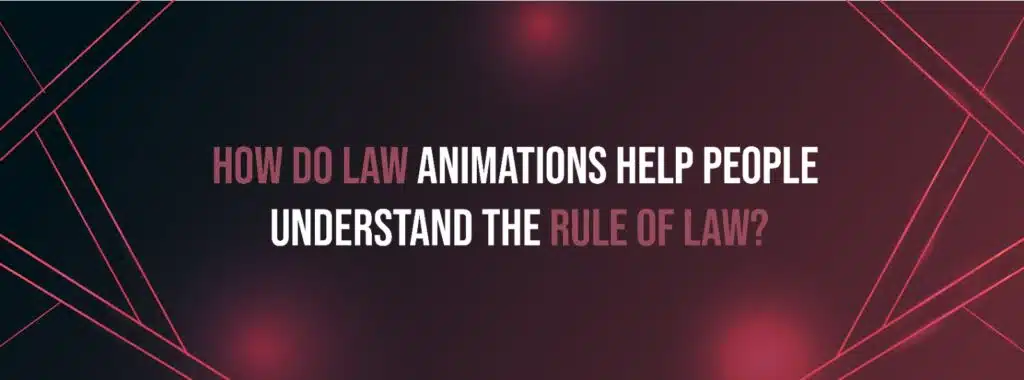
The implementation of laws holds greater significance than the creation of new ones. Law serves as the backbone of society, providing a framework for acceptable behavior and resolving conflicts between different social groups and communities. Without the rule of law, disputes would escalate, making it crucial for societal harmony and progress. Understanding the rule of law can often be challenging for many individuals. However, the advent of legal animation services, powered by cutting-edge technology such as 3D animation studios, is transforming how people grasp legal concepts. Through animated representations, complex legal principles are made more accessible and engaging. Creating effective legal animations requires a unique combination of legal expertise and technical animation skills. These animations play a key role in producing high-quality content that accurately communicates legal ideas. In this blog post, we will explore how legal animations are enhancing the public’s understanding of the rule of law and why this innovative approach is rapidly gaining popularity. Legal animations not only simplify complex legal concepts but also make them more engaging and easier to remember. By breaking down intricate ideas into visual narratives, these animations provide clarity and help viewers connect with the material on a deeper level. As legal professionals and educational institutions continue to embrace this technology, the demand for legal animations is growing rapidly. This shift highlights the increasing importance of visual learning tools in the legal field. Ultimately, legal animations bridge the gap between complex legal jargon and public understanding, making the law more accessible to everyone. What is the Rule of Law, and Why is it Significant to Understand? The Rule of Law is a fundamental principle that forms the cornerstone of a just and orderly society. It refers to a system in which both citizens and government officials are bound by law and held accountable for their actions. The Rule of Law ensures that laws are enforced fairly and consistently, with no one above the law, providing a stable foundation for society to function harmoniously. It promotes the idea that laws apply equally to all individuals, preventing arbitrary use of power and establishing the framework for justice. Key Elements of the Rule of Law: Legal Certainty: Laws must be clear, predictable, and accessible to all, allowing individuals to understand them and make informed decisions based on potential legal outcomes. Legal certainty fosters trust in the system, encouraging people to act confidently without fear of unjust consequences. When laws are transparent, citizens are empowered to follow them, contributing to a more organized and stable society. Equality before the Law: The Rule of Law demands that all individuals are treated equally under the law. No one should receive special treatment or privileges due to their social position, wealth, or other arbitrary factors. This principle guarantees fairness, ensuring that justice is not swayed by personal biases or power imbalances. By upholding equality, the Rule of Law builds public confidence in the legal system and promotes social cohesion. Fair and Impartial Judiciary: An unbiased judiciary is essential to interpreting and applying laws, ensuring that legal disputes are resolved fairly, without influence or favoritism. A fair judiciary protects the rights of individuals and ensures that everyone, regardless of their background, has access to justice. Without an impartial judiciary, the Rule of Law loses its effectiveness, as the law becomes subject to manipulation or abuse. Respect for Human Rights: The Rule of Law protects fundamental human rights, guaranteeing individuals’ freedom from arbitrary actions by the government or others, and safeguarding their freedoms. It ensures that laws respect the dignity and rights of individuals, preventing oppression or discrimination. The protection of human rights is central to the Rule of Law, ensuring that all members of society can live without fear of unjust treatment or persecution. The Rule of Law is crucial for maintaining an orderly society. It safeguards individual rights, encourages social stability, drives economic growth, ensures accountability, limits the concentration of power, upholds democratic principles, and prevents injustice, corruption, and abuse. It is built through clear, predictable laws, equal treatment of all individuals, a fair and impartial judiciary, and a strong respect for human rights. As society evolves, the Rule of Law remains a pillar that protects justice, equality, and freedom for all. How Can Law Animation Contribute to Understanding the Rule of Law? Law animation simplifies complex legal concepts by transforming them into visual narratives, making them more accessible and engaging. Clear illustrations of legal scenarios and processes, enhance comprehension and help demystify the rule of law. This visual approach fosters a deeper understanding by breaking down intricate legal principles into easily digestible and memorable content. 1# Enhances Comprehension & Visual Representation: Legal concepts can be difficult to grasp, often filled with complex terminology and abstract ideas that may confuse the average person. Animation, specifically in legal contexts, is an effective tool to simplify these concepts, making them more digestible for a wider audience. Through visual representations, legal scenarios, processes, and procedures are brought to life. For example, courtroom animations can depict the roles of judges, attorneys, and witnesses, while also showing the step-by-step progression of a trial. This visual approach not only aids in understanding but also helps viewers connect emotionally to the material, making it more relatable and memorable. 2# Diverse Storytelling Approaches: Animation offers unique storytelling techniques that bring real-life legal scenarios or hypothetical situations to life. By using relatable characters and narratives, law animation provides a dynamic way to showcase the practical application of legal concepts, making them more engaging and understandable to the viewer. Whether it’s dramatizing courtroom drama or demonstrating legal processes in action, animation allows for creativity in presenting legal stories. This enhances the audience’s ability to retain complex information while engaging them through compelling, real-world scenarios. 3# Clarity and Simplicity: The rule of law can sometimes seem abstract and difficult to understand. Legal animation helps break down complex legal theories and terminology into simpler, more accessible pieces. By using clear visuals, concise explanations, and step-by-step demonstrations, these animations promote clarity
Top 10 Best 3D Animation GIF Creation Tools for Your Brand’s Digital Marketing Success in 2025
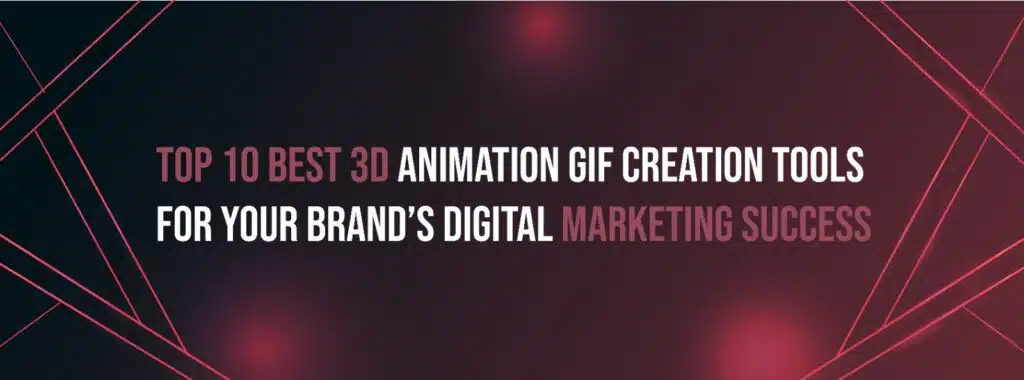
Create Stunning GIFs with Ease: The Ultimate Guide to 3D Animated GIF Makers In today’s fast-paced digital world, 3D animated GIFs have become a powerful tool for brands to enhance engagement and boost visibility. Whether for social media, email marketing, or website content, these eye-catching animations help brands stand out. With advancements in Best 3D GIF Animation Tools, marketers and designers now have access to innovative platforms that simplify the process of creating high-quality animated GIFs. This guide covers the Top GIF Makers for 3D Animation, provides insights into How to Create 3D Animated GIFs, and explores the best GIF Animation Tools for Marketing in 2025. Whether you’re looking for 3D Animation Software for GIFs or want to discover the Best 3D GIF Creators 2025, we’ve got you covered! 1. Adobe After Effects – The Industry Standard for 3D GIFs ✔ Why It’s Great: ✔ Best For: Example: A luxury fashion brand using After Effects to create a looping 3D product GIF for Instagram. 2. Blender – Open-Source 3D GIF Creator ✔ Why It’s Great: ✔ Best For: Example: An indie game studio using Blender to create animated 3D promotional GIFs. 3. Canva – The Beginner-Friendly GIF Maker ✔ Why It’s Great: ✔ Best For: Example: A coffee shop using Canva to make a 3D spinning cup logo GIF for its email marketing campaign. 4. Vectary – Web-Based 3D GIF Creator ✔ Why It’s Great: ✔ Best For: Example: An e-commerce brand using Vectary to create animated 3D product previews. 5. Cinema 4D – High-End 3D GIF Design Tool ✔ Why It’s Great: ✔ Best For: Example: A luxury car brand using Cinema 4D to create high-quality 3D looping GIFs of new models. 6. Ezgif – The Quick and Easy GIF Editor ✔ Why It’s Great: ✔ Best For: Example: A tech brand repurposing 3D video ads into GIFs using Ezgif. 7. Animaker – Animated GIFs for Marketing ✔ Why It’s Great: ✔ Best For: Example: A SaaS company using Animaker to create fun animated GIFs for Twitter ads. 8. GIMP with GAP Plugin – Open-Source Alternative for GIF Creation ✔ Why It’s Great: ✔ Best For: Example: A nonprofit using GIMP to create engaging animated campaign GIFs. 9. Figma – Web-Based Motion Design for GIFs ✔ Why It’s Great: ✔ Best For: Example: A mobile app startup using Figma to design animated onboarding GIFs. 10. Crello (VistaCreate) – Design-Focused GIF Maker ✔ Why It’s Great: ✔ Best For: Example: A fashion brand using Crello to create animated sale announcement GIFs. How to Choose the Right 3D GIF Animation Tool for Your Brand Choosing the best tool depends on your needs: ✔ For Beginners: Canva, Ezgif, Crello. ✔ For Professionals: After Effects, Cinema 4D, Blender. ✔ For Online Use: Vectary, Figma. ✔ For Budget-Friendly Options: GIMP, Animaker. By using Best 3D GIF Animation Tools, brands can enhance digital marketing campaigns and captivate audiences with interactive visuals. Final Thoughts: Mastering 3D GIFs for Digital Marketing in 2025 As digital marketing evolves, Best 3D GIF Animation Tools will play an essential role in brand storytelling. Whether you’re using Top GIF Makers for 3D Animation for social media, email marketing, or website engagement, choosing the right tool can make all the difference. From beginner-friendly platforms to professional-grade 3D Animation Software for GIFs, the tools listed in this guide cater to a wide range of needs. Understanding How to Create 3D Animated GIFs effectively ensures your brand stays ahead in 2025’s competitive digital landscape. So, start experimenting with Top GIF Software for Brands today and watch your engagement rates soar!
Best Free 3D Animation Software for Chromebook You May Not Know About in 2025
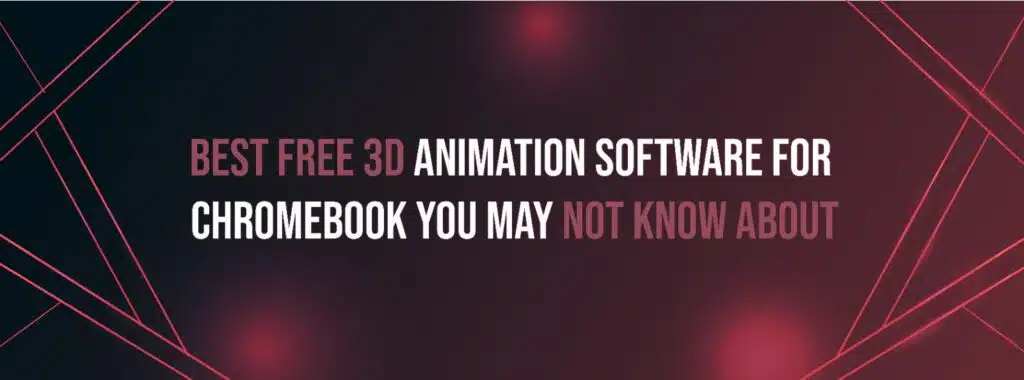
Image Source: Educators technology Chromebooks are widely recognized for their affordability, portability, and ease of use. However, many people assume they lack the power for creative applications like Free 3D Animation Software Chromebook users can access. Thanks to advancements in cloud computing and web-based tools, animators and designers can now explore Best 3D Animation Tools 2025 without needing high-end devices. Whether you’re a beginner learning How to Animate on Chromebook or a professional looking for Top Free 3D Animation Programs, this guide explores 3D Animation Apps for Chromebook that help you bring your creative ideas to life. If you’ve been searching for Best Animation Software for Beginners, you’ll find plenty of options that work smoothly on Chrome OS. 1. Blender for Chromebook – The Open-Source Powerhouse ✔ Why It’s Great: ✔ Best For: Example: An independent game developer creating character animations using Blender on a Chromebook. 2. Clara.io – A Cloud-Based 3D Animation Tool ✔ Why It’s Great: ✔ Best For: Example: A marketing team creating animated product designs with Clara.io for social media ads. 3. Tinkercad – Easy 3D Modeling for Beginners ✔ Why It’s Great: ✔ Best For: Example: A classroom using Tinkercad to design and animate basic 3D objects in Chrome OS. 4. Synfig Studio – Free 2D and 3D Animation Software ✔ Why It’s Great: ✔ Best For: Example: An indie animator creating web-series characters with Synfig Studio. 5. SketchUp Free – Browser-Based 3D Modeling and Animation ✔ Why It’s Great: ✔ Best For: Example: A real estate developer showcasing animated 3D building designs on a Chromebook. 6. K-3D – A Free and Flexible Animation Program ✔ Why It’s Great: ✔ Best For: Example: A student learning to animate 3D models for a school project using K-3D. 7. OpenToonz – Professional-Grade Animation on Chromebook ✔ Why It’s Great: ✔ Best For: Example: A digital artist creating animated promotional GIFs using OpenToonz. 8. Animatron – Online 3D Animation Tool for Marketers ✔ Why It’s Great: ✔ Best For: Example: A startup creating animated infographics for LinkedIn marketing campaigns using Animatron. 9. Daz 3D – High-Quality 3D Character Animation ✔ Why It’s Great: ✔ Best For: Example: A YouTuber designing animated virtual hosts for their videos using Daz 3D. 10. Houdini Apprentice – Free Version of Houdini for Chromebook ✔ Why It’s Great: ✔ Best For: Example: A VFX artist experimenting with procedural explosions using Houdini Apprentice on a Chromebook. How to Choose the Right 3D Animation Software for Chromebook ✔ For Beginners: Tinkercad, SketchUp, Synfig Studio. ✔ For Professionals: Blender, Houdini Apprentice, OpenToonz. ✔ For Cloud-Based Use: Clara.io, Animatron. ✔ For Character Design: Daz 3D, K-3D. With the right Chromebook Animation Software, you can bring stunning 3D animations to life without needing a high-powered PC. Final Thoughts: Mastering 3D Animation on Chromebook in 2025 The misconception that Chromebooks can’t handle animation is fading. With cloud computing, Linux compatibility, and advanced Free 3D Animation Software Chromebook options, anyone can animate on Chrome OS. Whether you’re a beginner exploring Best Animation Software for Beginners or a professional looking for Best 3D Animation Tools 2025, there are plenty of Top Free 3D Animation Programs available. By leveraging How to Animate on Chromebook techniques and utilizing 3D Animation Apps for Chromebook, you can create stunning animations without expensive hardware. So, start experimenting with Top GIF Software for Brands today and bring your digital creations to life!
Indie vs AA vs AAA Games: Understanding the Differences in 2025
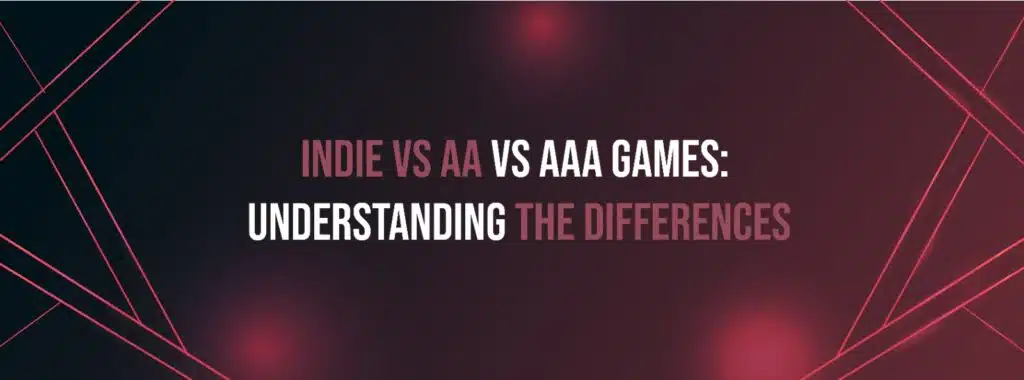
The gaming industry has evolved significantly over the past few decades, with games now classified into three major categories: Indie vs AAA Games, with the middle tier being AA games. Understanding the Difference Between Indie, AA, and AAA Games is crucial for gamers, developers, and investors alike. In 2025, the distinctions between these tiers are becoming more blurred, yet each category maintains its defining characteristics. Whether you’re a player deciding what to buy, an aspiring developer, or an industry analyst, this guide will break down Indie Games vs Big Budget Games, discuss What Are AAA Games?, and explore AA Games vs AAA Games while also covering Gaming Industry Tiers 2025, Indie Game Development Trends, and AAA Game Development Costs. 1. What Are AAA Games? The term AAA games refers to high-budget, high-profile video games produced by major game development studios with substantial financial backing. These games often feature: ✔ Large development teams with hundreds of employees. ✔ Multi-million-dollar budgets. ✔ Cutting-edge graphics, audio, and physics engines. ✔ Extensive marketing campaigns. ✔ Global distribution across multiple platforms. ✔ Examples of AAA Games in 2025: 2. What Are Indie Games? Indie games, or independent games, are created by small teams or individual developers without financial backing from major publishers. Indie vs AAA Games differs in several key ways: ✔ Smaller teams, sometimes even solo developers. ✔ Lower development costs, typically under $1 million. ✔ Unique gameplay mechanics and artistic freedom. ✔ Self-published or distributed via indie-friendly platforms. ✔ Examples of Indie Games in 2025: Indie games have seen tremendous growth thanks to platforms like Steam, Epic Games Store, and indie-focused subscription services. 3. What Are AA Games? (The Middle Tier) AA games fall between indie and AAA games, blending aspects of both. AA Games vs AAA Games can be distinguished by: ✔ Mid-sized development teams (50-200 people). ✔ Moderate budgets ranging from $5 million to $50 million. ✔ Strong production values but less financial risk than AAA. ✔ Niche appeal with creative freedom. ✔ Examples of AA Games in 2025: AA games continue to grow in popularity as they offer a balance between affordability and quality. 4. Indie Games vs Big Budget Games: Key Differences Comparing Indie Games vs Big Budget Games, we see some fundamental contrasts: Feature Indie Games AA Games AAA Games Team Size 1-50 developers 50-200 developers 200+ developers Budget Under $1M $5M – $50M $100M+ Graphics 2D or stylized 3D High-quality 3D Cutting-edge photorealistic 3D Marketing Social media & word of mouth Moderate advertising budget Multi-million-dollar ad campaigns Revenue Model Direct sales & crowdfunding Digital & physical sales Premium pricing + microtransactions Indie games often focus on creativity, AA games balance quality and affordability, while AAA games push technological boundaries. 5. Gaming Industry Tiers 2025: Evolving Definitions The Gaming Industry Tiers 2025 have continued to evolve, with new factors influencing categorization: ✔ Cloud Gaming Impact – Subscription services are allowing AA and indie games to reach AAA-level audiences. ✔ Live-Service Models – Many games blur the lines between AAA and AA with evolving content. ✔ AI-Assisted Development – Indie developers can now create games with production values closer to AA titles. The industry is seeing new trends where budget size alone no longer defines a game’s category. 6. Indie Game Development Trends in 2025 Indie Game Development Trends have shifted dramatically, with developers focusing on: ✔ Procedural Generation – Games like No Man’s Sky have inspired procedurally generated worlds. ✔ Hand-Drawn and Pixel Art Styles – Retro aesthetics remain popular. ✔ AI-Assisted Game Development – AI tools help small teams create AAA-like mechanics. ✔ Cross-Platform Play – More indie games are supporting multi-device access. ✔ Subscription Model Adaptation – Indie studios are partnering with Xbox Game Pass and PlayStation Plus. These trends are making indie games more competitive and widely accepted. 7. AAA Game Development Costs: Why Budgets Keep Growing AAA Game Development Costs have skyrocketed in recent years, with some major factors driving these expenses: ✔ Advanced Graphics and Realism – AAA studios invest heavily in motion capture and photorealistic textures. ✔ Large Open Worlds – Games require more content, assets, and AI-driven world-building. ✔ Marketing Budgets – Titles like Cyberpunk 2077 spent nearly $200 million on marketing alone. ✔ Multiplayer Infrastructure – Servers and online support increase costs significantly. In 2025, major titles cost between $100 million and $500 million to develop, making AAA development a high-risk, high-reward industry. 8. AA Games vs AAA Games: Do Gamers Notice the Difference? Many AA games now rival AAA titles in terms of quality. Here’s how AA Games vs AAA Games differ: ✔ Graphics Quality – AA games look fantastic but may lack cutting-edge ray tracing or ultra-high-poly models. ✔ Storytelling & Depth – AA games focus on innovative storytelling rather than spectacle. ✔ Live-Service Support – AAA games rely heavily on microtransactions and DLC expansions. ✔ Development Time – AAA games take 4-7 years to develop, while AA games can be made in 2-3 years. For gamers, the difference between AA and AAA is often negligible unless they’re looking for the absolute best graphics and production values. Final Thoughts: The Future of Indie, AA, and AAA Games in 2025 As we move further into 2025, the gaming industry continues to evolve. Indie vs AAA Games discussions remain relevant as more indie developers push boundaries, AA Games vs AAA Games distinctions blur, and AAA Game Development Costs continue to rise. With innovations like cloud gaming, AI-driven game design, and subscription models, Gaming Industry Tiers 2025 may shift even further, making it an exciting time for gamers and developers alike. Regardless of whether you prefer Indie Games vs Big Budget Games, there is more diversity and creativity in gaming than ever before.
How Much Corporate Video Production Costs? Pricing, Variations, Key Factors, and Insights in 2025
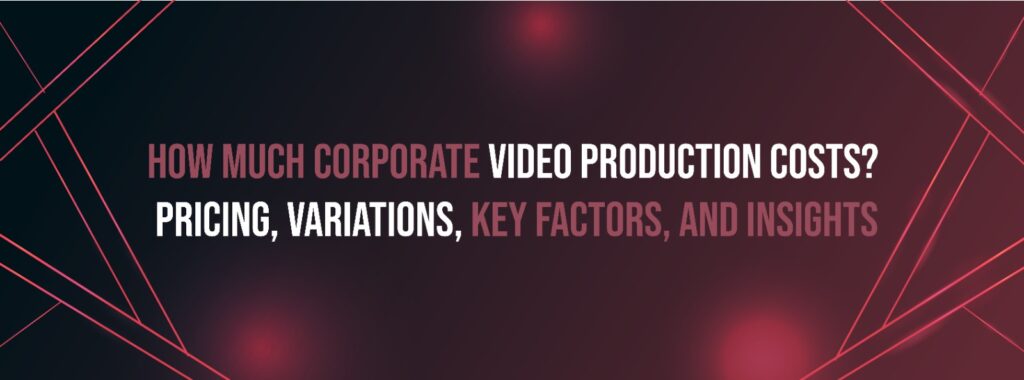
In today’s digital landscape, corporate videos have become a crucial part of marketing and branding strategies. However, businesses often wonder, How Much Does a Corporate Video Cost? The answer isn’t straightforward because Corporate Video Production Cost depends on multiple variables, including production quality, duration, and complexity. As we move into 2025, advancements in video production technology and changing market trends have influenced Video Production Pricing 2025. This guide will provide an in-depth Corporate Video Pricing Breakdown, discuss Factors Affecting Video Production Costs, and offer a Corporate Video Budget Guide to help businesses find Affordable Corporate Video Services without compromising quality. 1. What Determines Corporate Video Production Cost? Several Factors Affecting Video Production Costs contribute to pricing variations, including: ✔ Video Length – Longer videos require more editing, scripting, and production. ✔ Production Quality – High-end 4K cinematic videos cost more than simple animations. ✔ Location & Equipment – On-location shoots with specialized equipment increase costs. ✔ Scriptwriting & Pre-Production – Hiring professionals to develop the concept adds to expenses. ✔ Post-Production Editing – Advanced motion graphics, animations, and voiceovers add to the cost. 2. Corporate Video Pricing Breakdown: Understanding Cost Ranges Type of Corporate Video Estimated Cost (2025) Basic Explainer Video (1-2 min) $1,000 – $5,000 Mid-Range Corporate Video $5,000 – $15,000 High-End Corporate Promo Video $15,000 – $50,000 Live Event Coverage $3,000 – $25,000 Animated Video Production $3,000 – $20,000 TV-Quality Advertisement $25,000 – $100,000+ These figures offer an approximate Corporate Video Pricing Breakdown, but actual costs can vary based on project scope. 3. Video Production Pricing 2025: How Costs Have Changed The video production industry has evolved, with the following factors affecting Video Production Pricing 2025: ✔ AI-Generated Content – AI-assisted video creation reduces costs but lacks human creativity. ✔ Remote Production Trends – Virtual collaboration tools lower pre-production expenses. ✔ Higher Demand for 4K and 8K – Advanced resolution increases post-production complexity. ✔ Subscription-Based Production Models – Monthly video creation services offer cost-effective options. Understanding these trends helps businesses adjust their Corporate Video Budget Guide accordingly. 4. How Much Does a Corporate Video Cost? Key Budgeting Considerations If you’re wondering, How Much Does a Corporate Video Cost?, here are critical cost factors to consider: 🔹 Scriptwriting & Storyboarding ($500 – $5,000) 🔹 Filming & Equipment Rental ($1,500 – $15,000+) 🔹 Editing & Post-Production ($1,000 – $20,000) 🔹 Voiceovers & Music Licensing ($300 – $5,000) 5. Affordable Corporate Video Services: How to Save Money Businesses looking for Affordable Corporate Video Services should consider: ✔ Hiring Freelance Videographers – Reduces overhead costs compared to large production agencies. ✔ Using Stock Footage – Minimizes shooting expenses. ✔ Opting for Animation – Animated explainer videos are often cheaper than live-action videos. ✔ Editing In-House – If you have basic editing skills, you can reduce post-production costs. ✔ Leveraging AI Video Tools – AI-driven platforms offer budget-friendly automation. While cost-cutting is essential, ensuring quality remains a priority for effective brand messaging. 6. Corporate Video Budget Guide: Setting Realistic Expectations A well-planned Corporate Video Budget Guide ensures financial efficiency. Here’s how to budget for corporate video production: ✔ Define Objectives – Identify whether the goal is marketing, internal training, or branding. ✔ Prioritize Production Elements – Allocate funds based on impact (e.g., script vs. special effects). ✔ Request Multiple Quotes – Compare prices from different video production agencies. ✔ Plan for Revisions – Budget extra for post-production changes. ✔ Consider a Retainer Model – Ongoing video content packages can reduce long-term costs. A structured approach helps businesses avoid overspending while maintaining quality. 7. Cost of Professional Video Production: High vs. Low Budget Options The Cost of Professional Video Production varies depending on scope: ✔ High-Budget Productions ($50,000+) ✔ Mid-Range Productions ($5,000 – $20,000) ✔ Low-Budget Productions ($1,000 – $5,000) Each category serves different business needs based on branding goals and budget. 8. Choosing the Right Corporate Video Production Team To get the best return on investment, businesses must carefully select a production team: ✔ Freelancers vs. Agencies – Freelancers are cost-effective, while agencies provide full-scale services. ✔ Local vs. International Teams – Hiring locally can reduce travel costs. ✔ Portfolio Review – Always assess previous work before hiring a team. ✔ Client Testimonials – Look for proven success stories from past clients. Balancing experience and budget ensures high-quality video production tailored to business needs. Final Thoughts: Maximizing Corporate Video Value in 2025 As businesses invest more in visual content, understanding Corporate Video Production Cost is crucial. By analyzing Video Production Pricing 2025 and considering Factors Affecting Video Production Costs, companies can plan efficiently. For those wondering, How Much Does a Corporate Video Cost?, the answer depends on factors such as production scale, equipment, and post-production complexity. However, with strategic planning, businesses can find Affordable Corporate Video Services that fit their budget without sacrificing impact. By following a structured Corporate Video Budget Guide, leveraging technology, and choosing the right team, brands can produce high-quality corporate videos that enhance engagement and drive results in 2025.




